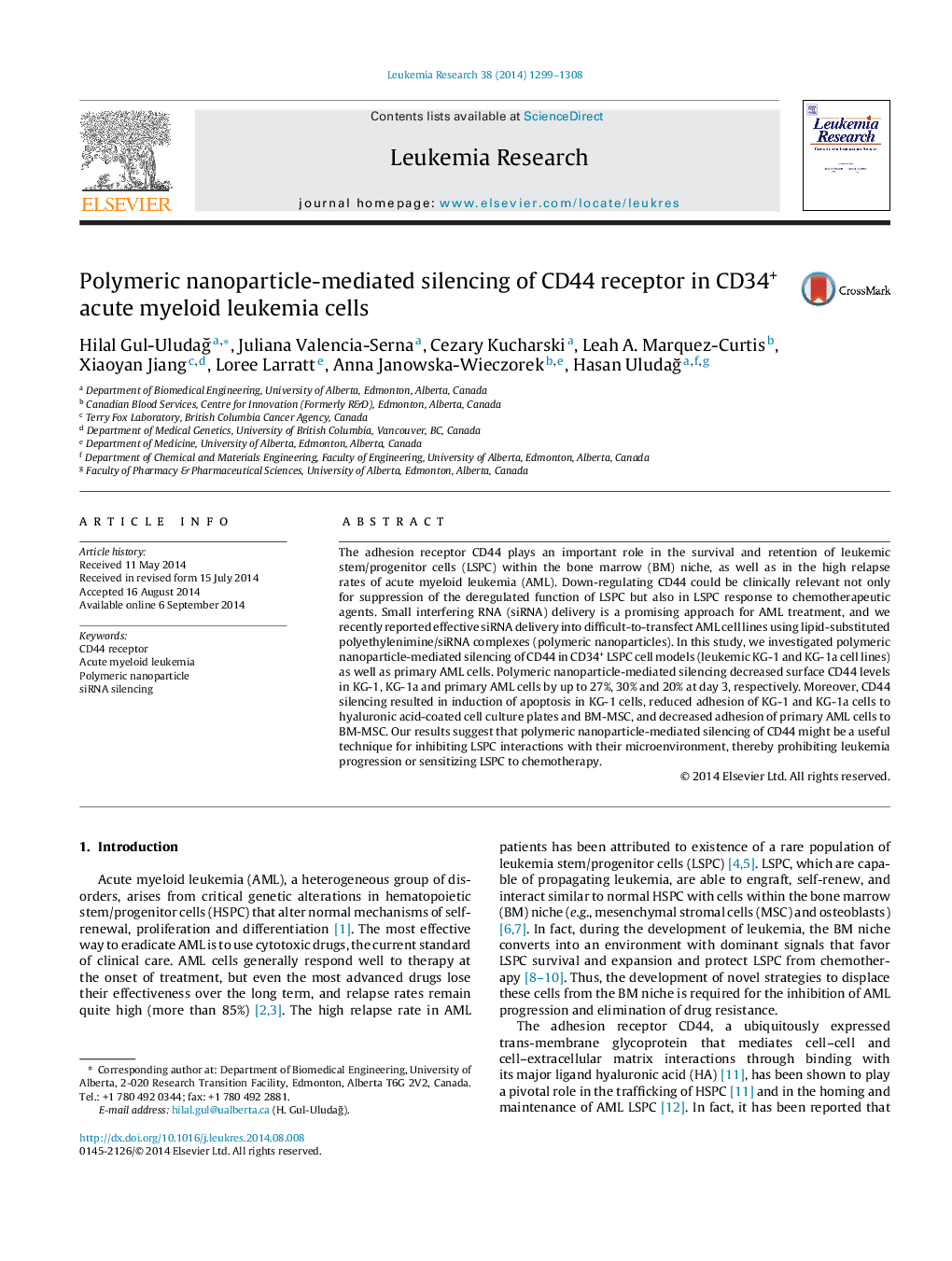| Article ID | Journal | Published Year | Pages | File Type |
|---|---|---|---|---|
| 2136658 | Leukemia Research | 2014 | 10 Pages |
•Polymeric nanoparticle-mediated CD44 silencing in CD34+ AML cells was efficient.•Surface CD44 silencing lead to induction of apoptosis.•CD44 silencing resulted in decreased cell adhesion.•There is a lack of growth inhibition, probably due to the lower CD44 silencing efficiency.
The adhesion receptor CD44 plays an important role in the survival and retention of leukemic stem/progenitor cells (LSPC) within the bone marrow (BM) niche, as well as in the high relapse rates of acute myeloid leukemia (AML). Down-regulating CD44 could be clinically relevant not only for suppression of the deregulated function of LSPC but also in LSPC response to chemotherapeutic agents. Small interfering RNA (siRNA) delivery is a promising approach for AML treatment, and we recently reported effective siRNA delivery into difficult-to-transfect AML cell lines using lipid-substituted polyethylenimine/siRNA complexes (polymeric nanoparticles). In this study, we investigated polymeric nanoparticle-mediated silencing of CD44 in CD34+ LSPC cell models (leukemic KG-1 and KG-1a cell lines) as well as primary AML cells. Polymeric nanoparticle-mediated silencing decreased surface CD44 levels in KG-1, KG-1a and primary AML cells by up to 27%, 30% and 20% at day 3, respectively. Moreover, CD44 silencing resulted in induction of apoptosis in KG-1 cells, reduced adhesion of KG-1 and KG-1a cells to hyaluronic acid-coated cell culture plates and BM-MSC, and decreased adhesion of primary AML cells to BM-MSC. Our results suggest that polymeric nanoparticle-mediated silencing of CD44 might be a useful technique for inhibiting LSPC interactions with their microenvironment, thereby prohibiting leukemia progression or sensitizing LSPC to chemotherapy.
